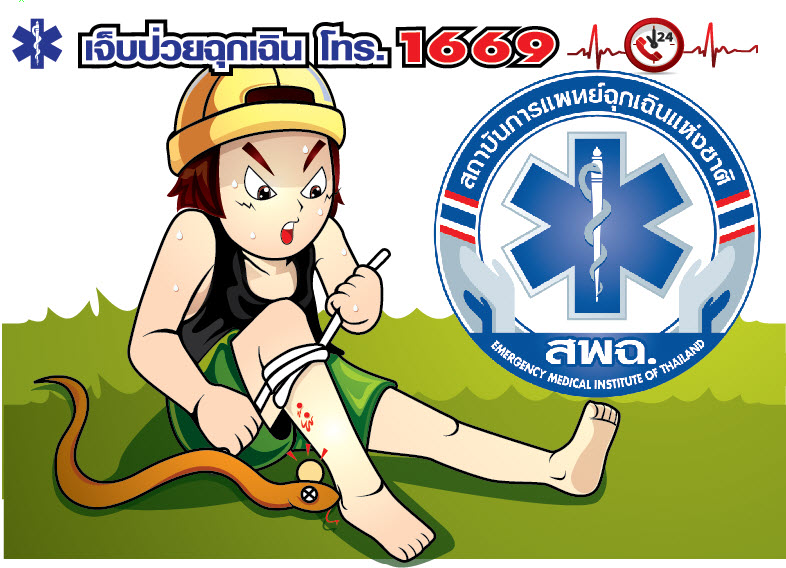Beware of venomous snakes in flood waters. People are urged to respond to snake bites quickly if they occur. Stay focused and dial 1669 to seek proper medical attention.

In many flooded areas, there are stagnant water areas that may widen to a large scale; these locations are likely to be filled with dangerous animals that are
escaping floods such as leeches, centipedes, scorpions and snakes. Pythons and cobras may escape flood waters and find shelters in people’s homes, which can cause serious danger.
According to medical statistics, apart from emergency illness that are found by emergency response unit, snakebites are also commonly found. In some cases,
people are seriously injured or killed.
Snake’s venoms:
1) Neurotoxic venom: it is fast acting and attacks the central nervous system. It causes drowsiness, paralysis, and respiratory failure. Death may occur instantly
after the injection. Poisonous snakes are the cobra, king cobra.
2) Hemotoxic venom: it affects the blood system and organs causing a breakdown or inflammation in the body. The venom prevents the blood from clotting,
tissues start to die. Affected people may vomit out blood and have painful breathing. Poisonous snakes are: daboia and vipers.
3) Cytotoxic venom: it affects the cellular tissue to the bitten area and therefore has a localized effect, but the venom can spread. It can be dangerous toward
the muscular system. Poisonous snakes are: sea snakes.
It is crucial not to wade flood waters. However, if it is necessary to do so, the body should be covered up before wading the flood waters, and always be aware of surroundings. If snakebites occur, Dr. Chatree Charoenchiwakul, SecretaryGeneral of the National Institute for Emergency Medicine (NIEM) suggests to be calm, stay focused and not panic because some cases of snakebites may not contain venoms, respond and treat the wound properly with first aid. In case venomous snakebites occur, it takes at least half an hour for the symptoms to grow severe. Wash the bitten area with clean water or alcohol or antiseptic. Do not cut the wound or suck the wound with mouth or burn the wound or drink alcohol, this is because it doesn’t help and may add more negative effects such as infections, gangrene (death of tissue in body part) or stimulate the venom’s effects.
Let the victim lay still. Position the body in such a way that the wound area appears lower than the level of the heart. Any unnecessary movement is restricted in order to slow down the venom from flowing rapidly through the lymphatic ducts and blood vessels reaching the heart. Place a wooden piece above the wound by 5-10 cm and wrap it around with cloth moderately. Do not wrap it too tightly as it can cause gangrene due to no blood circulation. Then immediately take the victim to the nearest public health service or hospital as soon as possible. If the victim stops breathing, perform rescue breathing by heart massage until reaching the hospital. Also, inform the physician about the traits of the snake or bring along the dead snake if possible.
In conclusion, if illness or accident occurs, dial 1669 to request medical assistance and help. Follow the instructions and safety tips strictly without delay every minute counts, it means life.
|